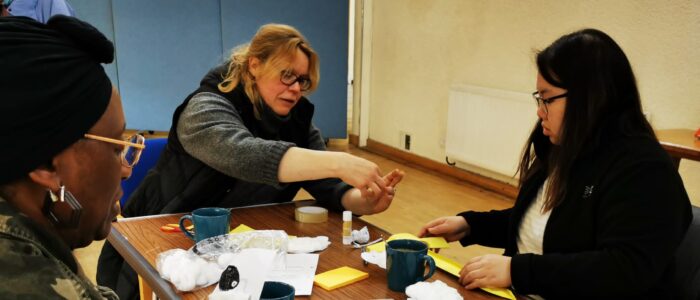Domestic Abuse & Employer Responsibility

This article was first posted on the Corporate Alliance Against Domestic Violence website. Felicity acts as an ambassador for CAADV.
Over the last few days I’ve seen quite a bit of coverage about Domestic Abuse… Whether it’s this image which was on the Huffington Post, the story about the judge who said that a victim of domestic abuse couldn’t have been a victim because of her class or Martine McCutcheon talking on Loose Women in reference to Mel B’s divorce. However, with the rate of Domestic Abuse I’m surprised to not see more…
One in four women and one in six men will be victims of domestic violence at some point in their lives. Where to do they get help? How can they ask for help? Walking into a police station and asking for assistance is a massive step and one that seems so far removed for many victims that they can’t do it.
As employers, we often tell or expect our employees to leave their lives at the door, and come in and do their job. It’s the expected thing amongst established work places. When we do chat about our lives that exist beyond the four walls of the building, it’s often stories of where we’re going on holiday, how the kids are excelling at school and how we got drunk at the weekend and had an amazing time.
Is it time to ask our employees to be more real?
So, if you are an employer, or part of a team at work, I challenge you this… Next time you’re in a team meeting, or an open plan office, look around. One in four women and one in six men will be a victim… How many people do you have in your team? Obviously we cannot make assumptions about people that we work with, but are we listening to each other and being aware of the possible risks?
Then let me say this, 20% of employed women take time off work and 8% lose their jobs as a direct result of domestic violence. Do you know how to spot domestic violence? Do you know how to talk to your team about the issue safely?
How about this stat: 75% of people who endure violence are targeted at work… So asking staff to leave their lives at the door doesn’t work anymore. It’s happening at your work, on your property, to your staff.
Less than 30% of all workplaces know how to respond when someone discloses domestic abuse. It’s not so simple as just referring someone to a service, more support needs to be given. Do you know how to do this?
This is why I champion the work of The Corporate Alliance so much but I understand that it requires us to be different employers. ‘Knowing that my work understood the impact of domestic violence – both physical and emotional – and was there to support me has been my biggest pillar of strength throughout all this’ – a victim of Domestic abuse said this about an organisation The Corporate Alliance had trained.
As an employer, can your employees say this about you?


